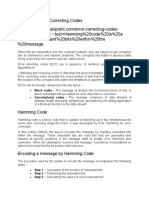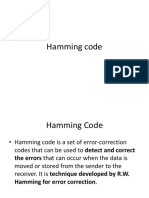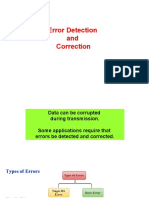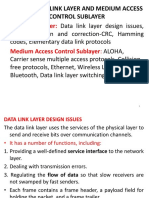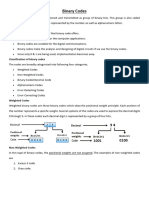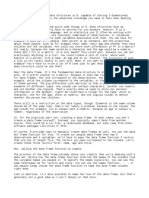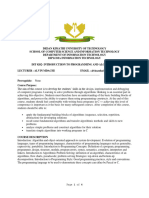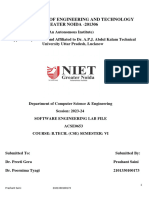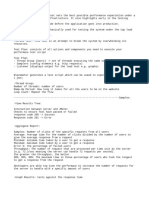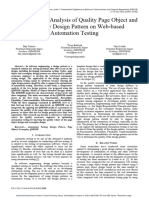0% found this document useful (0 votes)
96 views3 pagesError Correcting Codes - Hamming Codes
Hamming code is a block error-correcting code that can detect up to two simultaneous bit errors and correct single-bit errors. It works by adding redundant parity bits to the message in specific positions determined by powers of 2. These redundant bits are used at the receiver to detect and locate errors in the received message and correct single-bit errors. The encoding process calculates the number of redundant bits needed, positions them appropriately, and sets their values as the parity of relevant data bits. Decoding recalculates the parity bits and detects errors by comparing the received parity bits to the recalculated values.
Uploaded by
atina tehreemCopyright
© © All Rights Reserved
We take content rights seriously. If you suspect this is your content, claim it here.
Available Formats
Download as PDF, TXT or read online on Scribd
0% found this document useful (0 votes)
96 views3 pagesError Correcting Codes - Hamming Codes
Hamming code is a block error-correcting code that can detect up to two simultaneous bit errors and correct single-bit errors. It works by adding redundant parity bits to the message in specific positions determined by powers of 2. These redundant bits are used at the receiver to detect and locate errors in the received message and correct single-bit errors. The encoding process calculates the number of redundant bits needed, positions them appropriately, and sets their values as the parity of relevant data bits. Decoding recalculates the parity bits and detects errors by comparing the received parity bits to the recalculated values.
Uploaded by
atina tehreemCopyright
© © All Rights Reserved
We take content rights seriously. If you suspect this is your content, claim it here.
Available Formats
Download as PDF, TXT or read online on Scribd
/ 3
